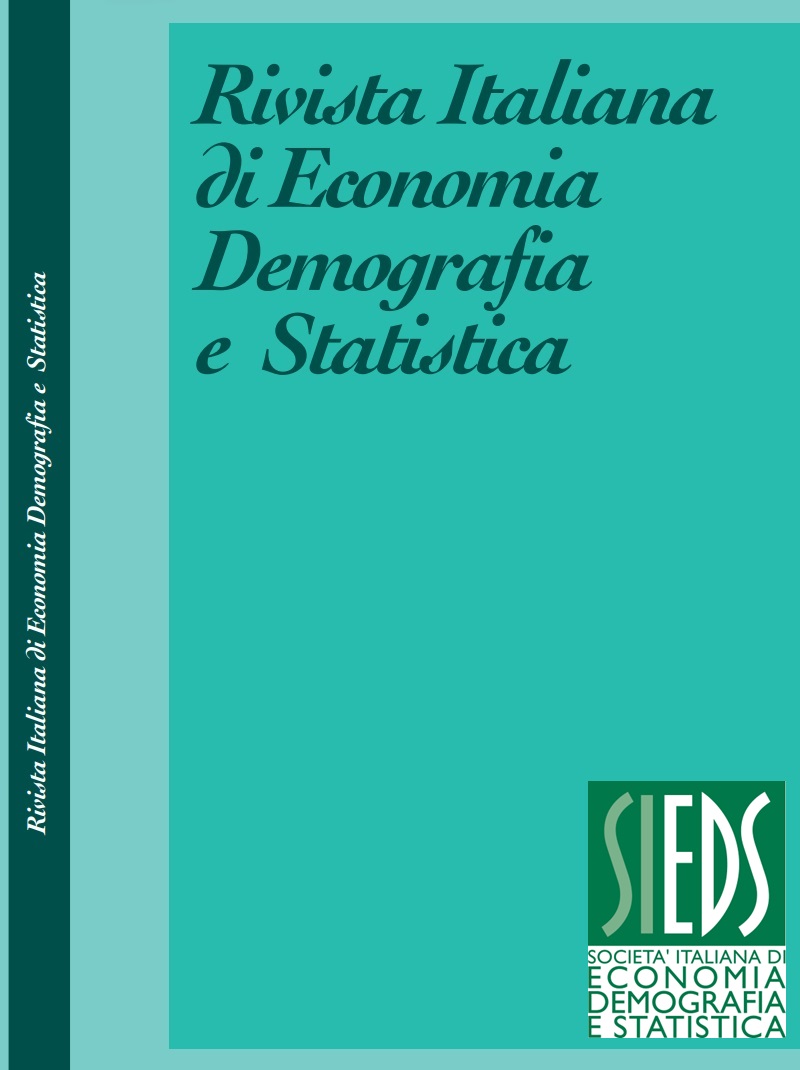Ageing population in Italy: a space-time analysis
Abstract
Population ageing is one of the most relevant demographic phenomena of this century. Italy is one of the countries in the world where the phenomenon has been fastest and most intense. Indeed, it presents large differences with regard to population ageing, to the demographic factors behind it and to the economic and social contexts where this phenomenon develops and impacts. The spatial dimension is therefore extremely important when investigating this phenomenon in Italy. This paper is part of the area of studies dealing with the analysis of demographic phenomena using both a spatial and a temporal perspective. The aim of the paper is to study population ageing in Italy by conducting a spatio-temporal analysis at a very fine territorial level. The data used for the analysis cover the period between 2002 and 2019 and refer to the Italian municipalities (LAU). The indicator of the age structure used is the ageing index, computed for each municipality and for each sample year. Beyond the descriptive analysis of the ageing levels and trends, we also estimate a simple nonparametric model. The spatial distribution of the ageing index remains persistently characterized by a strong coastal-inland divide as a result of the complex interaction between demographic dynamics and local socio-economic contexts. The spatial model allows to show that the two dynamics - space and time - are linked; space cannot be considered a secondary element, and looking at the more detailed spatial units is crucial. The analysis of municipalities characteristics is also important as a tool to support the governance in facing future demographic challenges.
Downloads
Published
Issue
Section
License
Copyright (c) 2022 Roberto Basile, Sara Basso, Sara Miccoli, Cecilia Reynaud

This work is licensed under a Creative Commons Attribution 4.0 International License.



